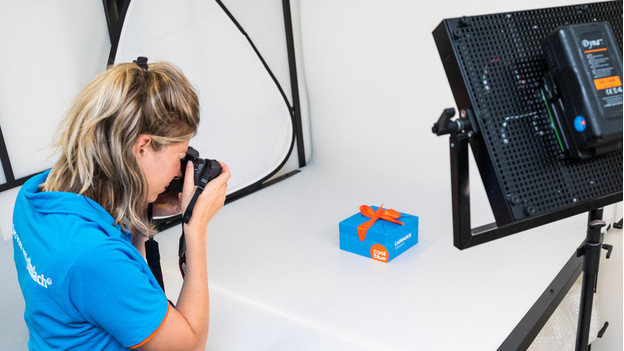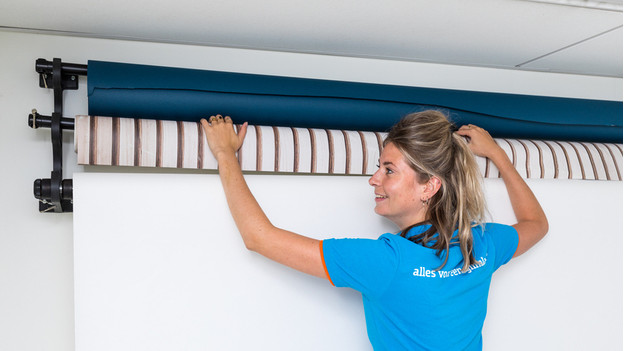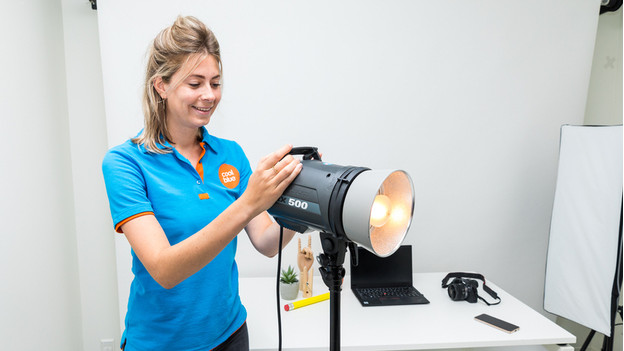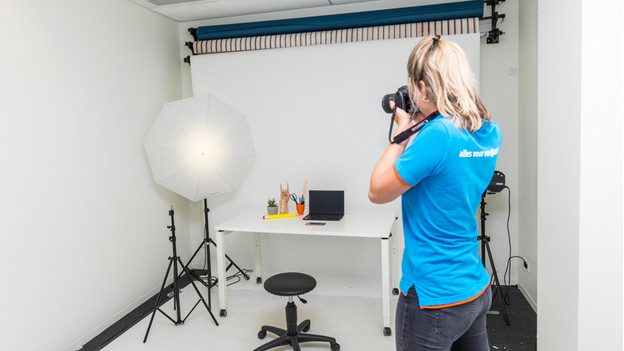
Advice on studio lighting
What do you want to photograph?

What you want to photograph ultimately determines the type of light that you will use. The size of your project is important for choosing the power of the flash or lamp. Do you want to photograph products or portraits? Then you only need a flash or lamp of up to 500 watts/wattseconds. If your projects are larger, such as wedding or fashion reports, then you need more light; from 500 to 1000+ watts/wattseconds.
Important: Often the power of a lamp or flash can be reversed, so that a 500Ws flash can also be used for product photography, which only requires 250Ws.
At which location do you want to take pictures?

The location of your photo shoot also determines the type of lamps or flashes that you take with you. When you shoot a lot on location, you want a set that's easy to transport and flexible. For example, you can consider taking photographs with the compact external camera flashes (strobist). But there are also location sets that come complete with a sturdy, easy-to-transport bag. If you shoot a lot outside, it's best to opt for a lighting set with a good battery, so that you're not dependent on mains electricity. Here too, strobist is a good choice because of the compact flashes and even more compact batteries.
If you have a (home) studio, you're less dependent on the weight or capacity of the battery. Here you only have to consider the size of the studio and the power of your lamp or flash.
Flash light or continuous light?

Flash light and continuous light are both widely used in photography. And there's something to be said for both types of studio lighting. That's why we list the advantages and disadvantages. Do you want to see the difference? Then watch Sascha's video review on the use of a studio lamp, a studio flash, and a camera flash.
The advantages:
- The advantage of a studio flash is that your movement can really freeze.
- The advantage of continuous light is that you constantly see the effect of light in a photo.
- The advantage of strobist is that you are flexible with a compact system.
The cons:
- The disadvantage of a studio flash is mobility. The heads are heavy and must be powered by mains power or a powerful battery.
- The disadvantage of a studio lamp is that they get hot. A model may suffer from this. If the lamp has cooling, the sound can be disturbing when video recordings are made.
- The disadvantage of strobist is the limited range of the flash units.
What type of light do you want to use?

The type of light is important for the appearance of the photo. We can categorize this into 2 groups: hard light and soft light.
Hard light gives your photo contrast, where shadows are angular and hard. Colors are often more intense and more saturated, while details disappear in shadows. You create this light by using a flash umbrella, a reflector, or valve set.
Soft light gives a photo an even, flat appearance, with much detail visible. The advantage of combining these features is that unwanted details, such as spots in the skin of a model, disappear. You create this light by using a soft box, reflection screen, or a beauty dish.


